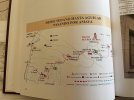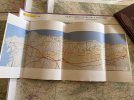I'm trying to avoid going down those rabbit holes of Camino planning...
This is no rabbit hole, this is an elephant crater.

| Remove ads on the forum by becoming a donating member. More here. |
|---|
I'm trying to avoid going down those rabbit holes of Camino planning...
Haha, yeah no kidding.his is no rabbit hole, this is an elephant crater.
I mean that blue square.I'm not sure what you mean?
yes, but it does pass through tobera, if you have not already saw it on the way from pancorbo and ona.The GR85 route is about 20 km, involving a climb of 325m, and a similar descent:
@caminka's route, following the GR99 is shorter and gentler, only 12km and looks mostly flat.
Sendero GR85 etapa 5: Frías - Trespaderne
Consulta la cuarta etapa Si en la anterior jornada andamos por la parte más llana del valle de Tobalina, ahora tendremos un contacto c...tierrasdeburgos.blogspot.com
the taste of some of those jewels and my wikiloc. I mixed GR99 and GR85 to get the most of them on the most optimal route.There is a Hostal and a campsite with cabins in Trespaderne. If you want to keep walking you would have to go all the way to Quintana de Valdevielso, another 27kms, to find a place to sleep. Alternatively you could go off-piste to Oña (if you didn't come to Frias that way), 14 kms farther on. From Oña to Quintana de Valdevielso is about 24 kms. It is a trade off, though - the next day, if walked on the Viejo proper, takes you past some real jewels, which you would miss.
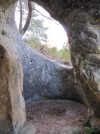
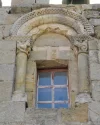
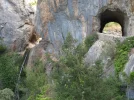
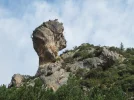
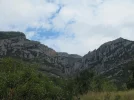
viejo camino in this thread is the camino that in this section follows the GR99.Well, as someone who is likely to be pushing against a time crunch, I wonder if there is any way to extend this day’s walk, either using the short route or the longer route.
And Vira, when you mentioned the “Viejo proper”, does that mean that there are two essentially parallel routes, one the GR99 Ruta del Ebro and the other the Viejo?
oh, oh! I love old trees!Alternative way: Yew Trees
Nearby but not on the camino there is a protected stand of ancient yews – 64 numbered and well-studied trees that are about 1000 years old. Here is an account of a loop track that takes in part of the camino as well as the trees:
http://tierrasdeburgos.blogspot.com/2011/09/ruta-de-senderismo-los-tejos-de.html
The track passes through Hoz de Valdivielso, so if you are super interested in seeing them, it would be easy to walk to the Valdivielso that way instead of using @caminka ’s track.
This church is famous, it looks like for very good reason.and one of the most amazing little romanesque churches I have ever cme across, san pedro de tejada.
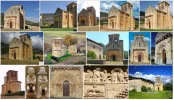
Me too!! Check out that website, it blew me away; there is a little video and the trees are start at about 3:30 into it. Going that way means missing the rock hermitage and the waterfall, but these are really serious trees, rare and special ones, and there are a number of them..oh, oh! I love old trees!
That's just weird. But good that it might be possible to go inside.The official web site of León y Castilla Turismo says it’s private property.
I am rooting for the route pamplona - salvatierra/aguirain (at least) to be named camino viejo - based on roman and medieval finds and the travel journey by abbot gundisalvo in 902. it would be exciting if this could be extended to aguilar along the abbot gundisalvo's route (Salvatierra, Alegría, Armentía, Trespuentes, Puentelarra, Tobalina, Frías, Oña, Sedano, Amaya, Nogales, Mave, Aguilar) which is different then GR 99 ruta del ebro, but then there would be two options!
attached is a quick sketch of how I see the connections.
OsmAnd makes that simple to plot, at least in terms of the basic route, which could be easily tweaked.the travel journey by abbot gundisalvo in 902. it would be exciting if this could be extended to aguilar along the abbot gundisalvo's route (Salvatierra, Alegría, Armentía, Trespuentes, Puentelarra, Tobalina, Frías, Oña, Sedano, Amaya, Nogales, Mave, Aguilar) which is different then GR 99
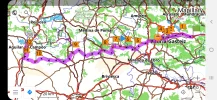
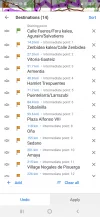
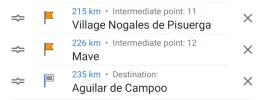
in 2012 the church was open in the morning and in the afternoon. the lady that attended to the key was later at the albergue arte y natura in quintana de valdivielso. she was very nice. I arrived at the church with about 15min to spare (till 12h, probably) but she let me run around ohing and ahing and taking photos till I was satisfied.This church is famous, it looks like for very good reason.
View attachment 75695
What is not clear is whether it is ever open.
My general sense, and please correct me if this impression is wrong, @caminka , is that the day from Trespaderne to QdV is a special one. I would be tempted to go from Frias to Trespaderne via Tobera/Oña (the first map in my last post), and then to QdV the next day, following your track - thus getting the best of both worlds.
What do you think?
I admit it would be an easy decision for me, having already seen the rock hermitage and the romanesque church and the gorge with the waterfall.Me too!! Check out that website, it blew me away; there is a little video and the trees are start at about 3:30 into it. Going that way means missing the rock hermitage and the waterfall, but these are really serious trees, rare and special ones, and there are a number of them..
that's because they don't let the photos being taken inside. I did go inside but couldn't sneak even one photo.Most websites show few if any photos of the interior, but it does look very pretty.
omg, you found this! that's what I was referring to in one of the above posts.Thank you, @Theatregal, but truely I'm standing on the shoulders of giants.
Here is something that @caminka posted about names in another thread in 2018, and it is worth a reprise here (especially the part that I put in bold):
it is definitely a start and then the fun of exploring begins.OsmAnd makes that simple to plot, at least in terms of the basic route, which could be easily tweaked.
Here you go:
View attachment 75773
View attachment 75774
View attachment 75776
I so appreciate your input, caminka - there aren't so many people who have gone this way!
Go, @caminka, go!it is definitely a start and then the fun of exploring begins.

Not to derail this thread or send it into the gutter, but San Pedro de Cervatos on the Olvidado is full of them! I couldn’t bring myself to take any pictures, though.And...ahem...
San Pedro de Tejada has some 'unusual' sculptural elements.
It turns out this is not unusual. Who knew?

Deciphering the sex scenes in Spain’s medieval churches
Experts meet to discuss the meaning of highly explicit sculptures made 1,000 years agoenglish.elpais.com

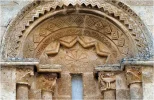

“Until [recently], the road that led from the Merindades to the capital of Burgos passed through El Almiñé. In this town the ascent of La Cuesta began, an impressive mountain pass that culminated, some 1,000 meters above sea level, in the hermitage of Nuestra Señora de la Hoz. The construction of the current [road through] the Puerto de la Mazorra diverted traffic and hermitage and town lost significance. El Almiñé is the paradigm of what some authors consider to be a village-road since, in fact, its urban structure follows, broadly speaking, the linearity of the Burgos road. [...] Travelers, some of them pilgrims, left the Burgos Mountains most likely for this magnificent place. Today, in El Almiñé there is no more bustle. The abandonment of the road plunged the town into oblivion.”
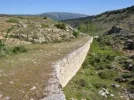
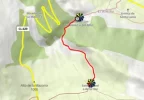
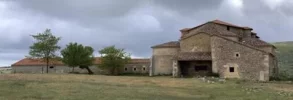
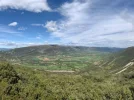
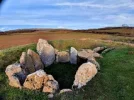
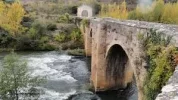
'Our' sounds very good to me, Laurie! may it be so!So here are some natural wonders to incorporate into your (hopefully our) little meander.
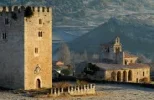
I thought that it was a neat way of educating poor illiterate peasants about the mysteries of gender.And...ahem...
San Pedro de Tejada has some 'unusual' sculptural elements.
It turns out this is not unusual. Who knew?

Deciphering the sex scenes in Spain’s medieval churches
Experts meet to discuss the meaning of highly explicit sculptures made 1,000 years agoenglish.elpais.com
Me too. I often wished on the Inierno that I had a better zoom lens, because there was a veritable bestiary on some of the churches.I love corbels. I think they are one of the very few insigts into the mind of common people of the middle ages left.
ditto!Me too. I often wished on the Inierno that I had a better zoom lens, because there was a veritable bestiary on some of the churches.
now there is also accommodation in cortiguera, casa rural talamo. cortiguera was during my next day stage because in 2012 it was a village of ruined houses and one or two weekend houses. but it would be nice to stay there because the nearby evening views of the canon del ebro must be amazing.Day 12, Quintana de Valdevileso – Pesqueria del Ebro 27.96 km
After meandering across the Valdivielso, it's time to move on.
Today we part company with the Ebro to go up and over the alto, but then re-meeting the rio higher up. So it's a day of a going up about 500 m and then at the end back down four-fifths of that. Why the route doesn't just follow the river is a question that is nagging at me but what we see going the other way is worth it.
Soon after leaving QdV, we come to San Nicolás de El Almiñé, which is definitely worth exploring.
This unusual window is from there:
View attachment 75849
And inside, there is this fine retablo:
View attachment 75850
This is an area with old pilgrimage roots. From the website about Las Merindadades:
The old calzada is our route onwards, and it's spectacularly well preserved.
Were you coming from the North (of you’d detoured to Poza de la Sal as @Sheffield James did, you could descend into QdV on this road. The rest of us walk up it early in the day, much easier than going down on that surface!
View attachment 75851 View attachment 75852
The old road climbs steeply and then levels off at Santa Isabel o de la Hoz,
View attachment 75853
Here, the camino turns right crossing the Alto de la Mazorra towards Pesqueria del Ebro.
From the mirador on the CL-629, the view down to the Valdevielso looking back the way we came from yesterday is not too shabby at all:
View attachment 75854
The Dolmen de la Cotorrita is a little to the North of the camino before the village of Porquera del Butrón, well worth the short detour. This dolmen is roughly 5,500 years old and was excavated and restored in 1969. It has an east-west orientation, and at least 15 people were buried there.
View attachment 75855
This wesite mentions the church at Porquera de Butron as having been 'restored;' it is certainly not of the caliber of others we have seen down in the valleys. Up here on the mesa, life is harsher than in the valley, and the village church in Cubillo de Butron has obviously fallen on hard times.
Dolmen de la Cotorrita
La “cotorrita” es uno de los “cinco grandes” dólmenes de la comarca de Las Loras. En realidad, hay muchos más, pero estos son los que han s...tierrasdeburgos.blogspot.com
From here the camino zig-zags back down to the Ebro.
Right at the old bridge over the river in Pesquera de Ebro is the Ermita de San Antonio; here we cross the bridge and enter the village.
View attachment 75857
The first document that talks about Pesquera de Ebro is dated to 941. As the town's name implies, it emerged as a fishing place and developed on the edge of the strategic bridge over the Ebro.
The town, with emblazoned houses and old palaces, is considered a Historic Site. It's is one of the towns with the highest density of noble shields in all of Spain. Most are from the 17th and 18th centuries, a time when a large part of their inhabitants were nobility. But now it is a humble place with only a handful of residents.
There are at least two CRs to stay, one right by the river.
'Our' sounds very good to me, Laurie! may it be so!
And wow, thank you. Waterfalls, look at them all!
I'll have a look in the morning in more detail. It's too late to dive into that rabbit hole...
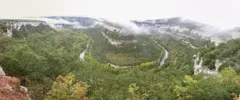
now there is also accommodation in cortiguera, casa rural talamo. cortiguera was during my next day stage because in 2012 it was a village of ruined houses and one or two weekend houses. but it would be nice to stay there because the nearby evening views of the canon del ebro must be amazing.
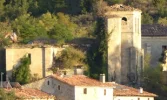
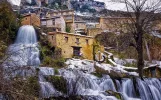
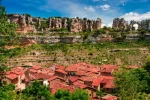
I dont' know about cave paintings.@caminka, what do you know about cave paintings in a cave behind the village? One website I found mentioned that, but I could not find any other information to corroborate it.



Here is a stunning photo from one of those sites, of Peña Amaya with a gorgeous church in the foreground:Las Loras Geopark, in Burgos and Palencia (Castilla y León)
A rugged terrain with imposing ravines and rocky outcrops, where you can find more Romanesque churches, convents and monasteries per kilometre than anywhere in Europe. These are the distinguishing features of Las Loras Geopark, which offers plenty of routes to explore on foot, by car or mountain biking. Some of the most spectacular landscapes are the gorges of the rivers Ebro and Rudrón (in Burgos) and Las Tuerces (in Palencia), close to the interesting Cave of Los Franceses and the recommended Mirador de Valcabado viewing point. Throughout most of the park you’ll also find pre-Roman castros, Neolithic dolmens, and Iron Age sites like the castros of Monte Bernorio, Peña Amaya, Peña Ulaña and Monte Cildá. Many of the park’s waterfalls are easy to access, such as those of Orbaneja del Castillo (Burgos) and Covalagua (Palencia). The area is ideal for adventure sports like rock climbing or canyoning.
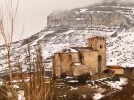
it would be exciting if this could be extended to aguilar along the abbot gundisalvo's route (Salvatierra, Alegría, Armentía, Trespuentes, Puentelarra, Tobalina, Frías, Oña, Sedano, Amaya, Nogales, Mave, Aguilar) which is different then GR 99 ruta del ebro, but then there would be two options!
OsmAnd makes that simple to plot, at least in terms of the basic route, which could be easily tweaked.
Here you go:

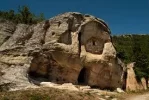
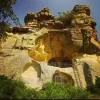
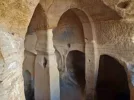
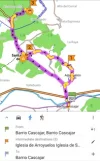
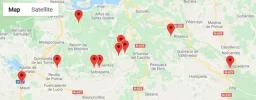
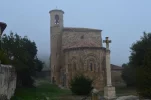
I didn't know about all those cave churches. woow!Day 14. Orbaneja del Castillo – Polientes 18.5km (or 26.25 with side trip to Ermita) 17.8 or 26.02
Between OdC and Aguilar de Campoo, we mostly follow the Ebro and dip in and out of Cantabria, which has a zig-zag boundary with Castilla y Leon.
There are a number of worthwhile detours from this short stage if you are into cave hermitages.
First, on the left soon before you arrive at Villaescusa, there is a short spur off the camino that goes to Ermita Rupestre de El Tobazo.
Then, about 8km after leaving Orbaneja del Casrtillo, turn right taking the bridge across the river at Barrio de Cascajar, to do a loop that begins with the cave church Iglesia de Arroyuelos:
https://www.cantabriaromanica.com/articulos/iglesia-rupestre-de-arroyuelos
View attachment 76384
On the return leg to the camino you can visit the small Iglesia de Santa Santa Maria. There was once a Roman imperial villa in Santa Maria de Hito, which was excavated in the 70s and 80s, but then unfortunately re-buried so there is nothing to see.
An additional out and back 3.9 km from Santa Maria de Hito brings you to a really remarkable set of cave hermitages at Presillas de Bricia:
https://visitalasmerindades.es/presillas/
https://www.turismo-prerromanico.com/monumento/san-miguel-de-presillas-20130625215821/
View attachment 76385 View attachment 76386
The total loop adds 8.79km to the day’s walk, but it’s not a long day and the side trip looks totally worth it. If you leave out the leg to Presillas (which I wouldn't because it looks really special) it is about a 5km loop:
View attachment 76387
As I mentioned some stages ago, this is one of many ermitas or iglesias rupestres in the area, all from between the 6th and 10th C.
Here’s a clip from a larger map from:
https://www.turismo-prerromanico.com/arte/eremitorios/mapa/
View attachment 76388
Each pointer on the map is a rock hermitage – and there is a much higher density of them here as opposed to other places in Spain. Between Orbaneja del Castillo and Aguilar de Campoo, six are on (or close to) the route of the camino. That website (link above the photo) blew me away. Before this week, I had no idea that these cave hermitages existed, and they evoke the same sense of mystery as do the desert fathers of the first millennium. Who were these hermits in the wilderness? And how did they live? Back then, these would have been impossibly remote.
This is a beautifully done blog about all the rock churches:
https://chitiya.wordpress.com/2016/11/05/la-ruta-de-las-iglesias-rupestres/
It’s not clear how many of these ermitorios are ever open (though some are small and open to the weather), so best to inquire where you are staying to see if they are gated or locked, and if so how to get in. I found a website that said “[A]ll these churches are usually locked (though they’re striking from the outside too). You’ll need to contact the helpful Oficina de Turismo de Valderredible in advance to arrange visits.”
(It’s worth mentioning in this context that well North of the Viejo – closer to the Olvidado proper – is the huge cave system and hermitage of Ojo Guareña, which is close to the route of the ‘regular’ Olvidado from Bilbao:
https://en.wikipedia.org/wiki/Ojo_Guareña
https://www.caminodesantiago.me/com...quisicedo-that-may-be-of-your-interest.37352/
This is also worth a look in the same general area, a beautiful walk described in the blog that Laurie posted about while ago:
https://yendoporlavida.com/2019/11/14/ruta-el-ventanon-de-sotoscueva-desde-ojo-guarena/)
If you are tired of cave hermitages, you might still want to take the slight deviation to visit the beautiful Romanesque Colegiata San Martin de Elines, only a small deviation from @caminka ’s track at San Martin de Elines.
View attachment 76390
Here, both the capitals and corbels are remarkable. The Mozarabic remains of the cloister and graveyard, as well as the Rupestrian churches nearby, are evidence of the early inhabitants in the Valderredible Valley.
Yes - the inside looks especially so.this is spectacular
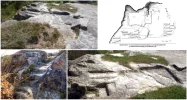
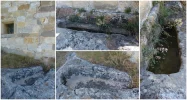
The building defines the archetype of a mountain village church. The workshops that built this type of edifice had few financial means. The [local] stonemasons proved to be skilled in roughing the stone blocks, lifting sturdy stonework, although they left much to be desired in terms of sculpting figurative scenes, demonstrating more imagination than mastery.
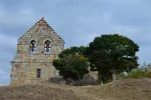

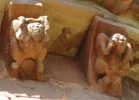
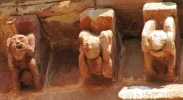
I followed the GR 99 all the way and didn't get lost this time.Day 15. Polientes – Villanueva de la Nia 13.4 or 17.5 (Road or Caminka’s track)
The way @caminka went is a bit longer than going directly along the road, and you could go that way if you wanted to shorten this leg.
these were one of the most interesting corbels I saw. I spent a while guessing what they could represent. I think that is certainy a woman giving birth. quite amazing.the guy picking his teeth made me chuckle out loud. And then someone has a toothache...and is that woman giving birth!?
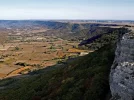
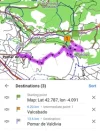
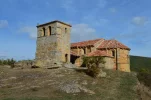
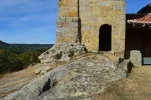
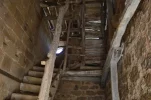
Here is a map; the CA 273 is the camino here:Dating back to the 10th century or earlier, Santa María de Valverde is the Ebro Valley's largest iglesia rupestre (rock-cut church). Written accounts from 978 AD describe the church as a simple one-nave affair; a 12th-century Romanesque expansion added the rooftop bell-gable and widened the interior into its present three-nave form.
The church retains a magical, rustic beauty, with irregular stone arches and rough-cut stone floors suffused in ghostly subterranean light. Visits are in conjunction with visits to interpretation centre next door, which gives an excellent introduction to this and the other rock-cut churches of the Ebro Valley.
Hours:10am-2pm & 4-7pm Sat & Sun mid-Mar–Jun & Sep–mid-Dec, Tue-Sun Jul-Aug, Mass 1pm Sun year-round.
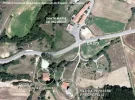
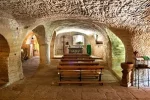
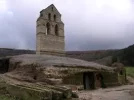
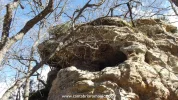
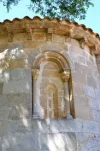
Haha! Thank you...But isn’t it time to start a new virtual planning thread on the Camino de las Asturias from Aguilar to Oviedo?Of course, if you need a well-deserved rest, your fan club can wait a while.
Doesn't the Camino de las Asturias part company from this route way back in Alava?
I just checked and you're right: PdA is where the paths diverge.I think the split may be Puebla de Arganzon. It
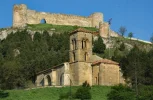
Awwww, thank you Laurie. It was such a joy, and a real gold mine of wonder. This route truly has it all.I think it is the most exhaustive and excellent effort I have seen when it comes to mapping out possibilities on an untravelled camino. Many gold stars and many hugs of thanks to @VN!!!!!!!!!
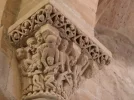
It's one of several, from the look of that blog I linked to above. If you go, print out the text of that (or pull it up on your phone) and you will have a complete guide.And the capital is five-star.
in the line that we have been maintaining for years, they represent grotesque, satirical and daring, mysterious and intriguing scenes, which they seek to attract attention and surprise the gaze of those who pass through there - and the system is still successful - to protect the temple from envy and bad feelings, especially when it is an isolated church in the countryside, like many lost hermitages in the mountains, which have at least some obscene element for protection.
Well done, intrepid and focussed pilgrim! Wherefore next, I wonder?...Today I made it to Ponferrada!
Thanks everyone, having this to do kept me focused.
In the near future, probably next week, I'll start the Camino de las Asturias...so stay tuned.
Going back to sort out some details, I finally found the answer. This news article dated February 2020 describes a new pedestrian bridge constructed 200 meters upriver from the old location. I don’t know why this news article only shows a picture of the old bridge with its middle missing. It would be comforting to actually see a picture of the new bridge! But I think it looks like the mystery is solved.It's wild. The Wikiloc track satellite photo shows a ruined bridge...with the track walking on water over the river in a dead-straight line. A peregrino with spiritual powers, I guess.

Day 9. Banos de Sabron - Frias (via the South bank of the Ebro after Embalse de Sabron)
Here is a screenshot of my proposed route, which diverts from the Viejo that both @caminka and @Sheffield James walked, missing Quintana Martin Galindez altogether
it looks like a lot of road walking on the southern route, though? that must have been one of the reasons I chose the northern route (and the menhirs(?) and probably cheaper accommodatoin in quintana).
BTW, This is a CR, not a convent.As far as lodging, Convento Vadillo in Frías will rent individual rooms and communicates via WhatsApp. 34 667 05 68 69.
BUT.... Nuestra Casa Rural "El Convento de Vadillo", es una casona de priedra, que forma parte del antiguo Convento Santa María de Vadillo, fundado en el siglo XIII y administrado por Canónigos de San Agustín.BTW, This is a CR, not a convent.
They had me there. Clearly I'm a sucker for marketing.
Are you carrying a tent or do they cater for singles in the bungalows or mobile homes?Day 2. Hiriberri to Etxarri Aranatz
OsmAnd tells me that in the surrounding hills ..... which leaves near this campground where I stopped for the night (it even has a swimming pool!):

Camping in Etxarri Aranatz Navarre Basque Country Caravanning
Urbasa eta Aralar parkeen artean dago, naturaz inguratuta. Etxarri kanpinean opor ahaztezinak izango dituzu. Kanpin familiarra Nafarroan. Kanping-Caravanning, Euskal Herrian.www.campingetxarri.com
Not me! My days of a 50lb pack are long gone! It does looks like they have other accomodation.Are you carrying a tent or do they cater for singles in the bungalows or mobile homes?
I wonder...Does that mean now administered by them, or originally adminustered by them?the CR is an old stone house, which forms part of the old Santa María de Valdillo Convent, established in the 13th century and administrated by the order of San Agustín
I was curious, too so with a little googling I found an article describing an effort to get restoration works started because the monastery is in bad shape. That article says that the monastery was occupied till the 19th century.I wonder...Does that mean now administered by them, or originally adminustered by them?
Sorry, Laurie, I missed this. Replying only a year or so late...Question for the day. Based on all this great information, I have tentatively sketched out a day from Frías to Oña to Trespaderne. I have found two very different routes to go from Frías to Oña.
I bolded my preferences. I would love to try E, though it misses Frias and Tobera.So here are options, all in one place; the main difference between A/B/C/D and E/F being whether you get to Oña from Frias or Pancorbo. The options I think are preferable have the asterisks; it would be a pity to miss the stage between Trespaderne and QdV. Really the main choice comes down to whether you will see Frias or Pancorbo; A and E below allow the highlights between Trespaderne and QdV regardless of which way you walk.
Via Frias
*A. Frias - Oña (via Tobera) - Trespaderne (29.7km),
Trespaderne - Quintana de Valdivielso (26.8 km) on Camino
B. Frias - Oña (via Tobera) (18.1 km),
Oña - Quintana de Valdivielso (28.2km)
(Through the Valdivielso valley, but bypassing Trespaderne, Ermita Rupestre de San Pedro, and the hermitage/waterfall at Tartales de los Montes)
C. Frias - Oña (via Tobera) (18.1 km), Oña - Poza de Sal (31.5 km),
Poza de Sal - Quintana de Valdivielso (29.8 km)(What @Sheffield James did)
D. Frias - Oña (via Trespaderne)(24.3 km),
Oña - Quintana de Valdivielso (28.2 km)(as B, above, but walking to Oña via Trespaderne, not Tobera)
Via Pancorbo
**E. Pancorbo - Oña, (32.7 km)
Oña - Trespaderne (12.3km)(onward on regular Viejo)
F. Pancorbo - Oña, (32.7 km)
Oña - Quintana de Valdivielso (28.2 km, as B and D above)
The main thing I would not want to miss with whatever alternative are the Romanesque goodies in the Valdivielso Valley and surrounding areas. So:Here are some maps...mix and match to your heart's content!
Here's a screenshot of what it would look like to go from Oña to QdV; it's about 25 km. It involves some backtracking from the day before, but this way at least you do not miss San Pedro de Tejada.
Specifically, there is a section of the Romanesque in the Valdivielso Valley and surrounding areas.
I know you discounted it, but Puebla de Arlanzon-Pancorbo-Oña-Frias is a great option, blowing through Miranda de Ebro. It's only 32 km between PdA and Pancorbo, giving the same number of days as PdA-MdE-S-F.
Oh, man. Let's go!. I hope beyond words that we can walk it someday!
As to this, it seems to me that another sensible route would be along the river out of Pamplona > Ororbia > Izcue (via Ibero or not) > Artázcoz > Izu > Egillor > Beaosáin > Anotz > tarmac through the canyon > Errotz > Izurdiaga > Irurtzun > etc.The way at first follows the autopista, but looks beautiful as it gets closer to Irurzun and Hiriberri
Yes, its so nice, indeed! And the old Roman road. So that's exactly why I was suggesting it in the last post. A wonderful way to dip one's toes into the water of less trafficked caminos.Personally, I could consider Pamplona > Altsasu > Vitoria > Miranda de Ebro -- but from there I'd need some serious convincing not to > Briviesca > Burgos !!
No1 seems the most alluringYes, its so nice, indeed! And the old Roman road. So that's exactly why I was suggesting it in the last post. A wonderful way to dip one's toes into the water of less trafficked caminos.
Others may want nothing to do with the Francés, and neither need nor want a cafe every several kms. So for them Viejo to Aguilar de Campoo, then one of the following:
- Olvidado - Invierno
- Olvidado - Francés (briefly, Cacabelos to O Cebreiro) - Via Koenig
- Olvidado -San Salvador - Primitive (or Norte)
Or through Ponferrada to the Invierno.Others may want nothing to do with the Francés, and neither need nor want a cafe every several kms. So for them Viejo to Aguilar de Campoo, then one of the following:
- Olvidado - Invierno
- Olvidado - Francés (briefly, Cacabelos to O Cebreiro) - Via Koenig
- Olvidado -San Salvador - Primitive (or Norte)
Personally, I could consider Pamplona > Altsasu > Vitoria > Miranda de Ebro -- but from there I'd need some serious convincing not to > Briviesca > Burgos !!
Caminka, I am looking at your tracks for the Viejo. Did you walk both the route on the north of the river and the route south of the river for the stage between Miranda de Duero and Baños de Sobrón? Your comment talks about the south path, but these tracks are on the north, right?oh! that is very good news. the path along the south of the ebro beneath the cliffs to the bridge into banos de sobron was very lovely.

Yes. The first part to Puente Larra was to the north of the Ebro and was partly on Gr 99, yellow local routes and Gr 1. There were some dolmens I wanted to see. It was a nice walk.Caminka, I am looking at your tracks for the Viejo. Did you walk both the route on the north of the river and the route south of the river for the stage between Miranda de Duero and Baños de Sobrón? Your comment talks about the south path, but these tracks are on the north, right?

camino2012-122 miranda-de-ebro - banos-de-sobrón
camino2012-122 miranda-de-ebro - banos-de-sobrón Hiking trail in Miranda de Ebro, Castilla y León (España). Download its GPS track and follow the route on a map. Record your own itinerary from the Wikiloc app, upload the trail and share it with the community.www.wikiloc.com
The first part to Puente Larra was to the north of the Ebro and was partly on Gr 99, yellow local routes and Gr 1. There were some dolmens I wanted to see. It was a nice walk

Interesting. Perhaps there is GR 99 on both sides? Or it could have been switched.Thanks. I was confused because there are also tracks that stay on the south of the Ebro the whole time.

Etapa 11: Baños de Sobrón- Miranda de Ebro
Etapa 11: Baños de Sobrón- Miranda de Ebro Hiking trail in Sobrón, País Vasco (España). Download its GPS track and follow the itinerary on a map. El desfiladero de Sobrón se abre a la campiña mirandesa El sendero recorre el angosto tramo final del desfiladero de Sobrón por la orilla derecha del...www.wikiloc.com
This track on the south shows a dolmen, too — this area is really chock full of dolmens!
We already know that San Pedro de la Tejada, near Quintana de Valdivielso, is owned privately, and that you have to reserve 48 hours ahead of time to see it.that's because they don't let the photos being taken inside. I did go inside but couldn't sneak even one photo.

I would.But if this is the fence that they are talking about, it seems to me that it really wouldn’t pose much of a problem for anyone willing to trespass a bit.
I remember the fencing, the route took me right along. It was at least 2m high romboid type of 'see-through' fence, randomly overgrown with plants, that wetted my appetite just enough. But the ermita was some way away and too little visible through everything. I got a bit desperate.We already know that San Pedro de la Tejada, near Quintana de Valdivielso, is owned privately, and that you have to reserve 48 hours ahead of time to see it.
My question is about the fencing. Google reviews repeatedly complain about a fence that keeps people away from visiting the exterior.
But if this is the fence that they are talking about, it seems to me that it really wouldn’t pose much of a problem for anyone willing to trespass a bit.
@caminka, do you remember the fencing? (maybe an unfair question since it was 12 years ago!).
View attachment 172367
I just saw that the phone numbers for visiting the church are the same as the phone numbers for Arte y Natura. Maybe these guys are the owners. How in the world did this get into private ownership anyway????The lady (caretaker?) later appeared at albergue arte y natura and I got the impression she was part of the team working there.
I remember the fencing, the route took me right along. It was at least 2m high romboid type of 'see-through' fence, randomly overgrown with plants, that wetted my appetite just enough. But the ermita was some way away and too little visible through everything. I got a bit desperate.
I was very lucky that somebody was there and got my 15min before the siesta.
The lady (caretaker?) later appeared at albergue arte y natura and I got the impression she was part of the team working there.
Unless a big ebough hole appears in the fence, there is no trespassing.
Not to derail the thread, but @WestKirsty, you know your Viejo fans would love to follow along on the Lebaniego! You know how to pick your caminos, girl!(on the Camino Lebaniego as I type this!
Not to derail the thread, but @WestKirsty, you know your Viejo fans would love to follow along on the Lebaniego! You know how to pick your caminos, girl!
On their sign with open hours is (translated):My question is about the fencing. Google reviews repeatedly complain about a fence that keeps people away from visiting the exterior.
But if this is the fence that they are talking about, it seems to me that it really wouldn’t pose much of a problem for anyone willing to trespass a bit.
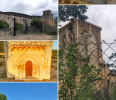
It seems that it's on rudely and zealously guarded private property, the owners using the church as a way to make a few Euros.Parece que no soy la única persona que ha sufrido la desconsideración de la individua que atiende a los visitantes. Nos echó con muy malas formas después de dejarnos pasar porque no teníamos intención de entrar a visitarla. Por lo demás la Ermita es preciosa, a juzgar por lo poco que pudimos ver.
There are four so-called “iglesias pintadas de la llanada” (which include Gaceo, Alaiza, Añua, Arbulo). These churches are all located in the vicinity of Salvatierra-Agurain. The Álava Medieval site has more info.the regime for visiting in 2012 was like this: you hired a guide and had to have your own transport. you met the guide at the church in gozeo at 10h to see the beautiful frescoes inside (camino passes by but it's locked), then you met the guide at alaiza at 14h to see those primitive frescoes inside the church. there are pilgrims on these fresceos, too. that was the reason I didn't went to see the frescoes (and I still regret it). hopefully this has changed since then.
there is another fine dolmen in the vicinity of alaiza, Dolmen de Sorginetxe. I think you met the guide there also.
That sounds like a really good idea.great albergue in Alegría is only 12 (flat) kms from Salvatierra, maybe you could add those kms on after the visit(s) to make some forward progress that day.
There are four so-called “iglesias pintadas de la llanada” (which include Gaceo, Alaiza, Añua, Arbulo). These churches are all located in the vicinity of Salvatierra-Agurain. The Álava Medieval site has more info. This would probably require a rest day, but since the great albergue in Alegría is only 12 (flat) kms from Salvatierra, maybe you could add those kms on after the visit(s) to make some forward progress that day.
I'm not sure there is an actual list, but we will certainly be happy to have one. I think most should be in my guide, you can start there.I really love Romanesque churches especially those with frescoes. I know a lot of planning has been done on this forum, I wonder if anyone has made a list of Romanesque churches that are on the viejo?
Should I start a new thread for this information?
We talked about a lot of them uptrend. And Caminka's guide might have them, too. A separate list compiling all that would be super! Maybe as a resource rather than a thread.Should I start a new thread for this information?
Thanks for this, it will be a great help. I'm particularly interested in the churches with medieval frescoes so am very excited about the two near Salvatierra-Agurain.I'm not sure there is an actual list, but we will certainly be happy to have one. I think most should be in my guide, you can start there.
finally uploaded to the forum! (I though I did it, like, five years ago.)
is it possible for a moderator to replace the link to my guide on google.docs with this one on the forum?I'm not sure there is an actual list, but we will certainly be happy to have one. I think most should be in my guide, you can start there.
finally uploaded to the forum! (I though I did it, like, five years ago.)
there is another one a bit off-route in the pdf file in the post #192.Thanks for this, it will be a great help. I'm particularly interested in the churches with medieval frescoes so am very excited about the two near Salvatierra-Agurain.
